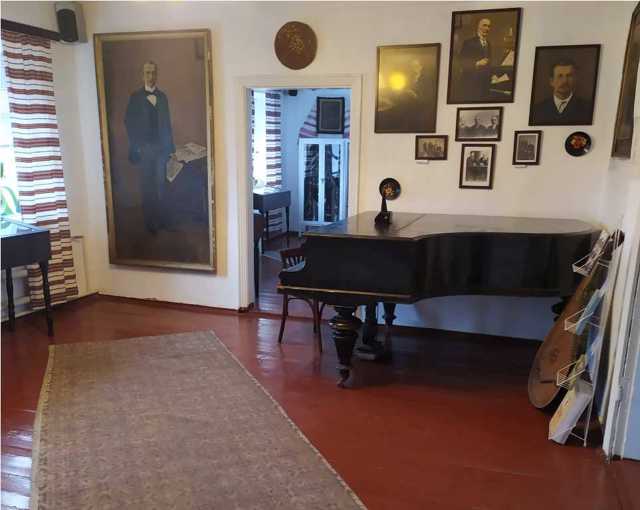Functional temporarily unavailable
General information about Vepryk
Veprik village is located 5 km west of Fastov. An ancient settlement of Scythian times (IX BC - IV century) has been preserved on the territory of the Mlynki farm. For the first time in documents, the village is mentioned in 1455 as the village of Veprin, donated by the Kiev prince Olelko Vladimirovich to his friend O. Sokhnovich, among other estates on the banks of the Irpen. The name is due to the fact that in these places there were many wild boars, which were hunted by the ancient Russian princes. In 1856 the wooden church of St. Paraskeva was built, where the outstanding composer K. Stetsenko served as the parish priest. In Veprik, he spent the last years of his life - from 1920 to 1922. The Stetsenko Museum was opened in his estate.
Село Веприк розташоване в 5 км на захід від Фастова. На території хутора Млинки збереглося давнє городище скіфських часів (IX до н.е. - IV ст.). Вперше в документах село згадується в 1455 році як селище Веприн, подароване київським князем Омельком Володимировичем своєму другові О. Сохновичу серед інших маєтностей на берегах Ірпеня. Назва пов'язана з тим, що в цих місцях водилося багато вепрів, на яких полювали давньоруські князі. В 1856 році було побудовано дерев'яну церкву Св. Параскеви, парафіяльним священиком в якій служив видатний композитор К. Стеценко. У Веприку він провів останні роки свого життя - з 1920 по 1922 рр. В його садибі відкрито музей Стеценка.
Сплануй своє перебування у Vepryk
What to see and where to go in Vepryk
Tourist attractions and museums of Vepryk

Kyrylo Stetsenko Memorial Museum
Museum / gallery
The estate-museum of Kyrylо Stetsenko was opened in the village of Vepryk in the Fastiv region, where the composer spent the last years of his life - from 1920 to 1922. Stetsenko, who turned to the church during the revolution, responded to an invitation from the Vepryk community, which wanted to have a Ukrainian priest. In the village, the composer created two folk choirs: village and children's. In the spring of 1922, Kyrylo Stetsenko fell ill with typhus and died shortly before his 40th birthday. He was buried in Vepryk, residents take care of his grave. The museum houses the composer's belongings, a grand piano, as well as objects of ethnography and everyday life, which help to recreate the situation in which Kyrylo Stetsenko lived and worked.
Reviews Vepryk
Geographical information about Vepryk
| {{itemKey}} | {{itemValue}} |
|---|---|
| Region |
Kyiv |


